
Nokia Corporation is a Finnish multinational telecommunications, information technology, and consumer electronics corporation, originally established as a pulp mill in 1865. Nokia's main headquarters are in Espoo, Finland, in the Helsinki metropolitan area, but the company's actual roots are in the Tampere region of Pirkanmaa. In 2020, Nokia employed approximately 92,000 people across over 100 countries, did business in more than 130 countries, and reported annual revenues of around €23 billion. Nokia is a public limited company listed on the Nasdaq Helsinki and New York Stock Exchange. It was the world's 415th-largest company measured by 2016 revenues, according to the Fortune Global 500, having peaked at 85th place in 2009. It is a component of the Euro Stoxx 50 stock market index.

Some mobile phones support use of two SIM cards, described as dual SIM operation. When a second SIM card is installed, the phone may allow users to switch between two separate mobile network services manually, have hardware support for keeping both connections in a "standby" state for automatic switching, or have two transceivers to maintain both network connections at once.
Nokia's strategic nomenclature can be traced back in 2005 when the Nseries line was launched, offering devices with flagship specifications and premium hardware at various price points. These devices were considered the "bread and butter" of the company and were often positioned to showcase their latest technologies. Thanks to the newfound consumer and enterprise interest in smartphones at the time, the company introduced four additional collections to diversify their product portfolio and meet demands in most market segments. These new phone series were named Eseries, targeting small business and enterprise customers; Xseries, providing consumer-grade multimedia-focused devices; Cseries, which Nokia used to target both the low-end and mid-range market segments; and Tseries, for devices exclusive to the Chinese market.

Microsoft Lumia is a discontinued line of mobile devices that was originally designed and marketed by Nokia and later by Microsoft Mobile. Introduced in November 2011, the line was the result of a long-term partnership between Nokia and Microsoft—as such, Lumia smartphones run on Microsoft software, the Windows Phone operating system; and later the newer Windows 10 Mobile. The Lumia name is derived from the partitive plural form of the Finnish word lumi, meaning "snow".

Nokia Asha is a discontinued series of low-end feature phones and smartphones produced and marketed by Nokia. The name "Asha" came from the Hindi word meaning "hope".

Nokia PureView is the branding of a combination of technologies used in cameras of Nokia-branded smartphones and previously, in phones by Microsoft Mobile. PureView was first introduced with the Nokia 808 PureView.

The Nokia Asha platform is a discontinued mobile operating system (OS) and computing platform designed for low-end borderline smartphones, based on software from Smarterphone which was acquired by Nokia. The platform inherits UI similarities mostly from MeeGo "Harmattan", and replaced Series 40 on Nokia's low-end devices. The user interface design team was headed by Peter Skillman, who had worked previously on webOS and the design of MeeGo for the Nokia N9.
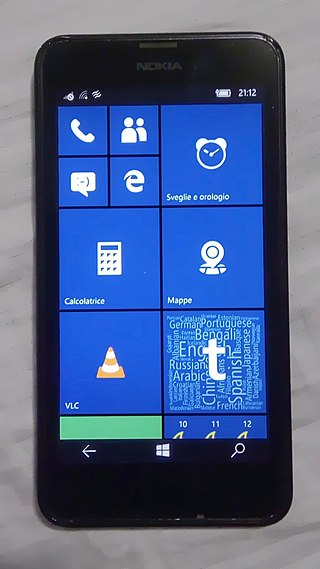
The Nokia Lumia 630 is a smartphone developed by Microsoft Mobile that runs Microsoft's Windows Phone 8.1 operating system. It was announced on 2 April 2014, at Microsoft Build 2014 and scheduled to be released in July 2014. It has a Qualcomm Snapdragon 400 SoC with a quad-core processor and Adreno 305 GPU. Additionally, it has a 4.5-inch display and a 5 MP camera. The Lumia 635 is similar but 4G-compatible, lacks a dual-SIM version and comes in a different finish, while the Lumia 636 and 638 are identical, but come with 1 GB of RAM and are currently available only in China and India respectively.

The Nokia X family was a range of budget smartphones that was produced and marketed by Microsoft Mobile, originally introduced in February 2014 by Nokia. The smartphones run on the Nokia X platform, a Linux-based operating system which was a fork of Android. Nokia X is also known generally as the Nokia Normandy. It is regarded as Nokia's first Android device during the company's Microsoft partnership and was in the process of selling its mobile phone business to Microsoft, which eventually happened two months later.

Microsoft Mobile Oy was a Finland subsidiary of Microsoft Devices involved in the development and manufacturing of mobile phones. Based in Keilaniemi, Espoo, it was established in 2014 following the acquisition of Nokia's Devices and Services division by Microsoft in a deal valued at €5.4 billion, which was completed in April 2014. Nokia's then-CEO, Stephen Elop, joined Microsoft as president of its Devices division following the acquisition, and the acquisition was part of Steve Ballmer's strategy to turn Microsoft into a "devices and services" company. Under a 10-year licensing agreement, Microsoft Mobile held rights to sell feature phones running the S30/S30+ platform under the Nokia brand.
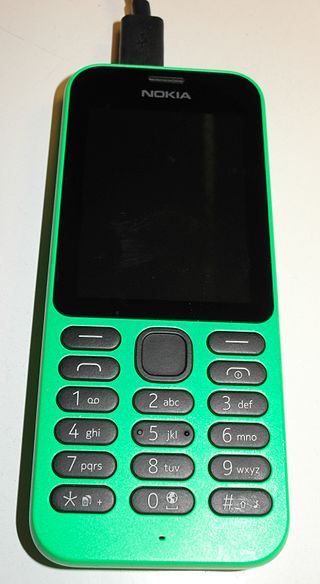
The Nokia 215 and Nokia 215 Dual SIM are Nokia-branded dual-band GSM feature phones by Microsoft Mobile. The phones were released in the first quarter of 2015, in the Middle East, Africa, Asia, and Europe. They are available in black, white, and bright green.
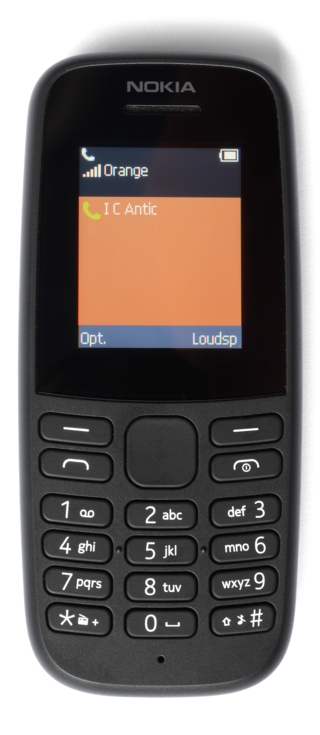
Series 30+ is a software platform and application user interface used for Nokia-branded, then HMD-branded mobile devices since 2024. The platform was introduced by Nokia in September 2013, first appearing on the Nokia 108, and has been the main Nokia feature phone operating system after the end of the Series 30 and Series 40 platforms in 2014. Despite the similar name and user interface, the S30+ is technically completely different and unrelated to the S30.

The Nokia 105 (2015) and Nokia 105 Dual SIM (2015) are Nokia-branded feature phones originally developed by Microsoft Mobile. The phones were originally released on 3 June 2015, as a revival of the original Nokia 105, and sold again by HMD Global. The Nokia 105 (2015) has one SIM card slot, and the Nokia 105 Dual SIM (2015) with two slots. The selectable colours are black, white and cyan.
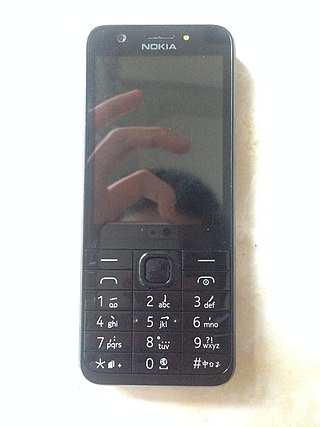
The Nokia 230 and Nokia 230 Dual SIM are Nokia-branded feature phones originally developed by Microsoft Mobile. The phones were originally released in December 2015, and sold again by HMD Global in November 2018. The Nokia 230 has one SIM card slot, and the Nokia 230 Dual SIM with two slots. Initially, the phones were only released in black and white, but HMD would later add dark blue and light gray color options, after the release of Nokia 106 (2018) in November 2018.

HMD Global is a Finnish independent mobile phone manufacturer. The company is owned by the Luxembourgish holding company Smart Connect GL. The company is made up of the mobile phone business that the Nokia Corporation sold to Microsoft in 2014, then bought back in 2016. HMD began marketing Nokia-branded smartphones and feature phones on 1 December 2016. The company has exclusive rights to the Nokia brand for mobile phones through a licensing agreement. The HMD brand was initially only used for corporate purposes and does not appear in advertising, whereas the name "Nokia Mobile" is used on social media. In January 2024, HMD rebranded to 'Human Mobile Devices' and will use its branding on future devices alongside that of Nokia.
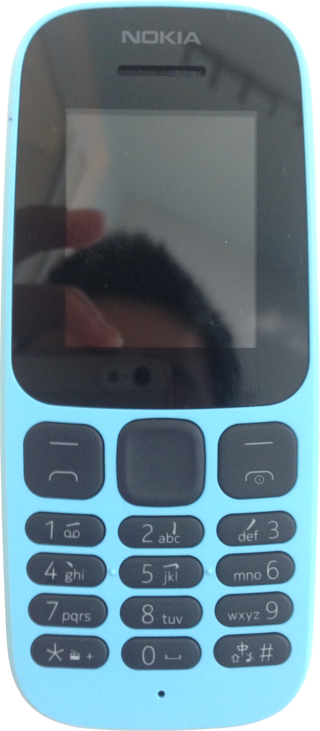
Nokia 105 (2017) is a Nokia-branded mobile phone developed by HMD Global. It was released on 17 July 2017 and is available in black, white, and blue. It also has 3 games: Snake Xenzia, Doodle Jump, and Crossy Road. There are some other Nokia 105 units sold in certain regions that also have 3 more games: Ninja Up, Air Strike and Tetris.

Nokia 105 (2019), also known as Nokia 105 4th Edition, is a Nokia-branded feature phone developed by HMD Global. It was unveiled on 24 July 2019 alongside the Nokia 220 4G and released in September 2019. The phone is available in three colours; blue, pink and black.
Nokia 105 is the name of a series of different mobile phones manufactured or marketed by HMD Global. Models aside from the 4G versions communicate on second-generation cellular (2G) networks only, rather than later standards such as 4G, and will no longer work when 2G networks are phased out, as has been happening since 2016 in different regions.
The Nokia 1.3 is a Nokia-branded smartphone by HMD Global, running Android Go. It was announced on March 19, 2020 alongside the Nokia 8.3 5G, Nokia 5.3 and Nokia 5310 (2020).














